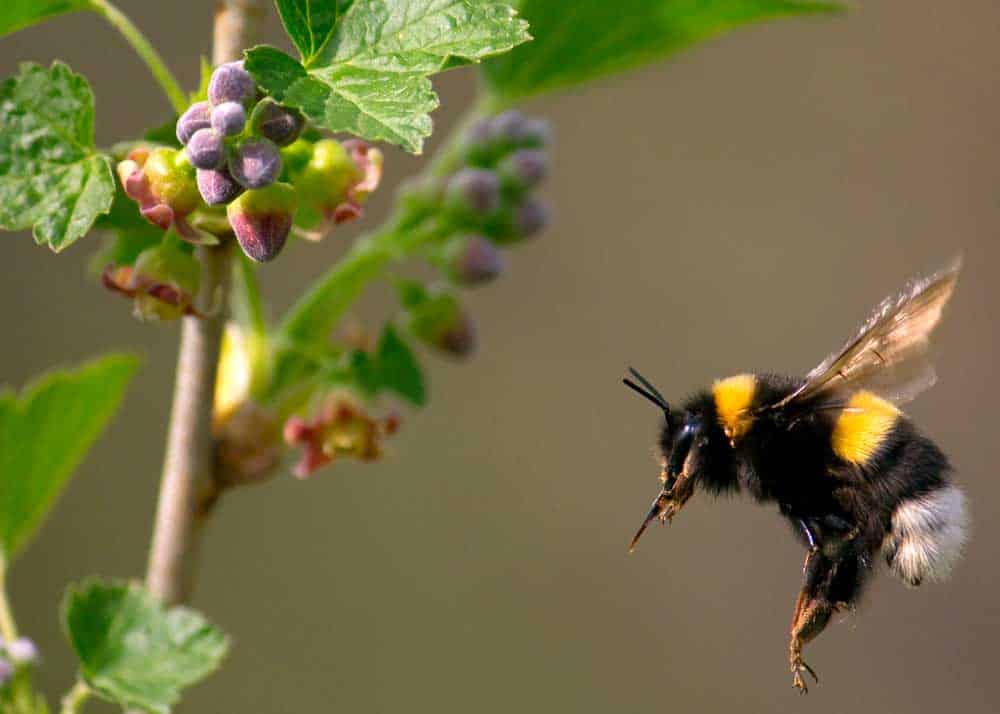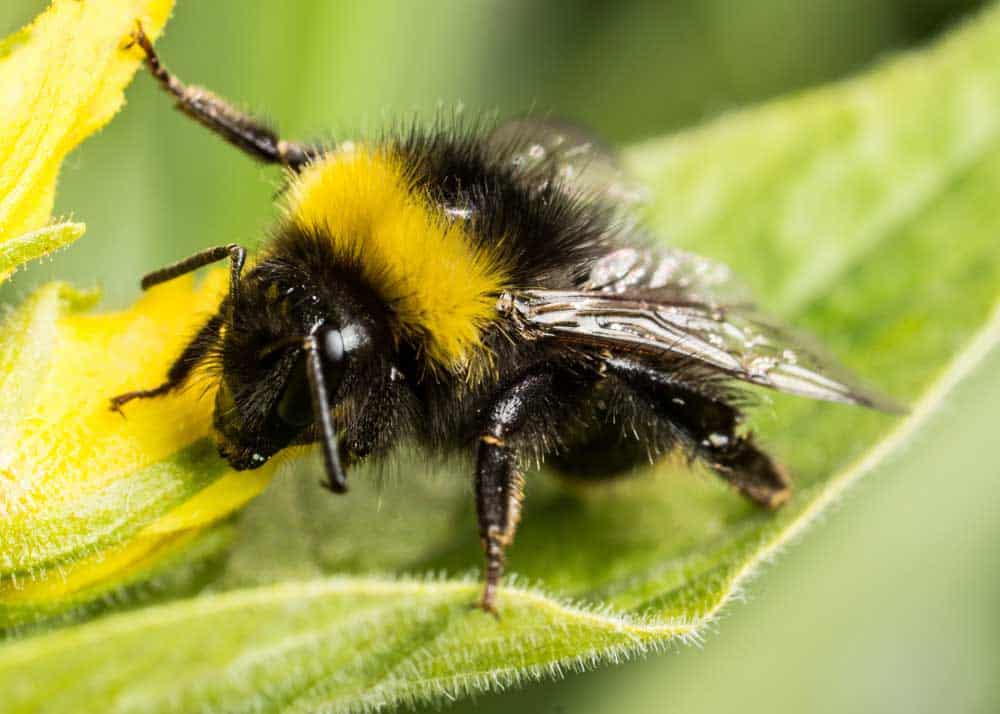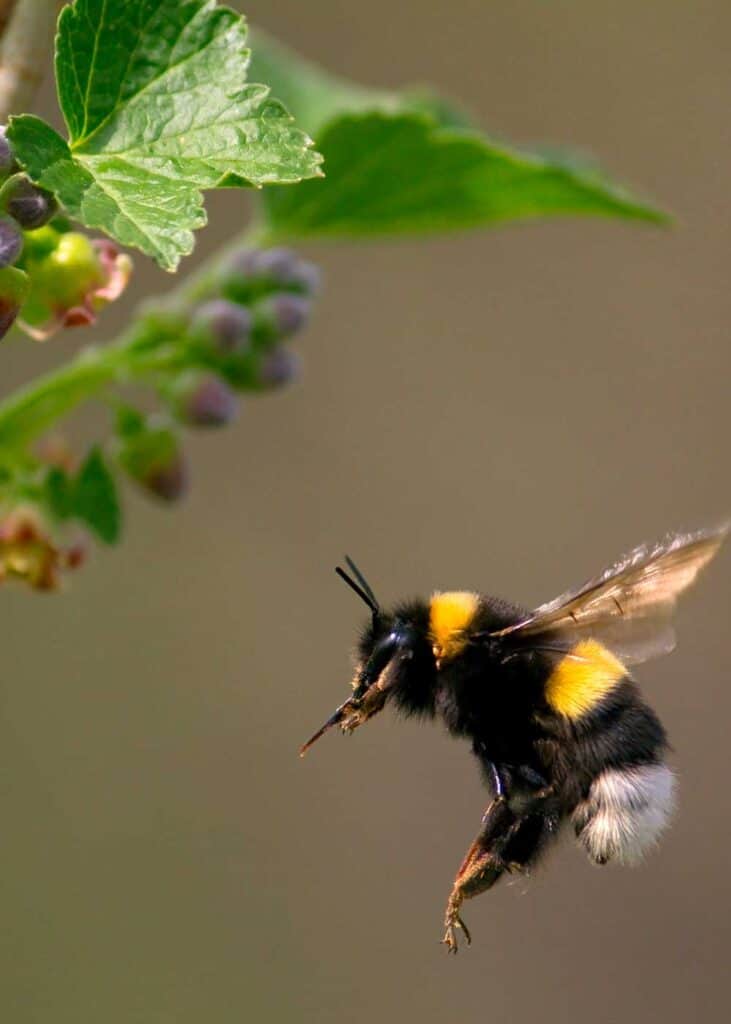Bumble bees are often confused for honey bees. Do bumble bees make honey? Learn about the type of honey that bumble bees make. And how it differs from the traditional honey bee honey.
Like honey bees, bumble bees make a type of honey too. Unlike honey bees that make massive amounts of honey, bumble bees usually only make enough to feed the bees in their hives. Both the volume and quality of bumble bee honey differs from typical honey bees.

When you see bees flying around in your yard, you might wonder if they produce honey in their hives. Many beehives produce honey, which they use to feed other bees. Those who keep bees can harvest that honey for other uses. The flavor of the honey depends on the flowers that the bees pollinate.
Table of Contents
Do Bumble Bees Make Honey?
Bumble bees collect nectar and pollen and make a honey-like material.
There are some key differences in this food source when compared with what we know as honey from honey bees.
1. Bumble Bee Honey Volume
Bumble bees need much less food supply when compared to honey bees.
Here’s why:
- Their colonies are smaller (250 bumble bees is a large hive) compared to 50,000 honey bees in a typical hive.
- The whole hive dies in winter, except for the queen. They don’t require a long-term food source to survive the cold weather. Even in the southern US, most bumblebees die during the colder weather.
So, bumble bees aren’t honey producers like we think of with honey bees.
And bumble bees are not honey bees.
Bumblebees produce honey but never in the quantities found in honeybee hives. Bears probably spend little time looking for bumblebee nests to raid.
University of Georgia
2. Bumble Bee Honey Quality
Some don’t consider bumble bee honey to be actual honey.
This is because it isn’t dehydrated like the honey of a honey bee. Because the water content of the nectar/honey remains high, it is very watery.
But this isn’t straight nectar.
They process the material in their mouths to convert it to honey.
In addition to nectar, adult bees will chew pollen grains mixing them with saliva in order to make honey. This honey is then fed to larvae and the queen. Because of their fast work, these bees can have very high populations.
Animal Diversity, University of Michigan

9 Facts About Bumble Bees
- Bumble bees are unique because they usually only live for a year. Whit Gibbons of the Savannah River Ecology Laboratory at the University of Georgia found that the queens of these colonies come out in the spring.
- The queens look for males and mate with them, after which the males die. Each queen will then find a new nest and lay her eggs there.
- All of the first eggs are females who cannot lay eggs. These bees become worker bees who build a stronger nest.
- The queen can lay several groups of eggs and have males who become worker bees and mate with other females.
- Bumble bees hibernate in the winter and come out in the spring to start the cycle over again.
- These bees do not have as many predators as other bees do. Honey bees, for example, fall victim to black bears. The bears attack their nests and kill the bees to get to the honey inside. As bumblebees produce less honey, bears do not seek out their nests.
- The National Wildlife Federation found that bumble bees have wings that beat more than 100 times every second, which helps them with pollination. Bees carry pollen between male and female plants to help them grow, but they can also spread different plants and flowers to new areas. Though this family has different bees, most are 1.6 inches long or smaller.
- You’ll find these bees living in regions around the world. They are common in parts of South America, such as Chile and Argentina, as well as North America. While some prefer warmer regions like the south and southwest, others live in the Midwest and colder climates where they can hibernate and stay safe in the winter.
- Their diets include pollen and nectar, which they chew with their mouths. The bee breaks down these substances with their saliva to form honey, which is the main food source for both the queen and her offspring.
Do you know: Do Wasps Make Honey? and Do Hornets Make Honey?
Bumblebee or Bumble Bee?
Seems like a simple question. How is bumblebee spelled and written?
Dictionaries and research papers are inconsistent. As are nature sites.
I found this discussion to be helpful and logical.
Snodgrass, who wrote the classic, “Anatomy of the Honey Bee,” states: “If the insect is what the name implies, write the two words separately; otherwise run them together. Thus we have such names as house fly, blow fly and robber fly contrasted with dragonfly, caddicefly and butterfly, because the latter are not flies, just as an aphislion is not a lion and a silverfish is not a fish. The honey bee is an insect and is preeminently a bee; ‘honeybee’ is equivalent to ‘Johnsmith.’”
Poughkeepsie Journal
The Entomological Society of America has adopted this same naming convention.
More reading: Bee vs Wasp vs Hornet (Identification Guide)

More Reading: Do Bats Eat Bees? According to Beekeepers
Bumble Bees and Honey
The black and yellow bumblebees that fly around your yard are similar to honey bees that produce a lot of honey each year. But there are some noticeable differences between the species. Though bumble bees do make honey, they do not make as much as honey as other bees do.
- About the Author
- Latest Posts
Bryan Haines is a co-founder and writer at The Buginator. And is working to make it the best resource for taking back the outdoors from biting, stinging pests.
He also blogs about travel at Storyteller.Travel and photography at Storyteller Tech. Bryan is a partner at Storyteller Media, a publishing company he runs with his wife, Dena.
